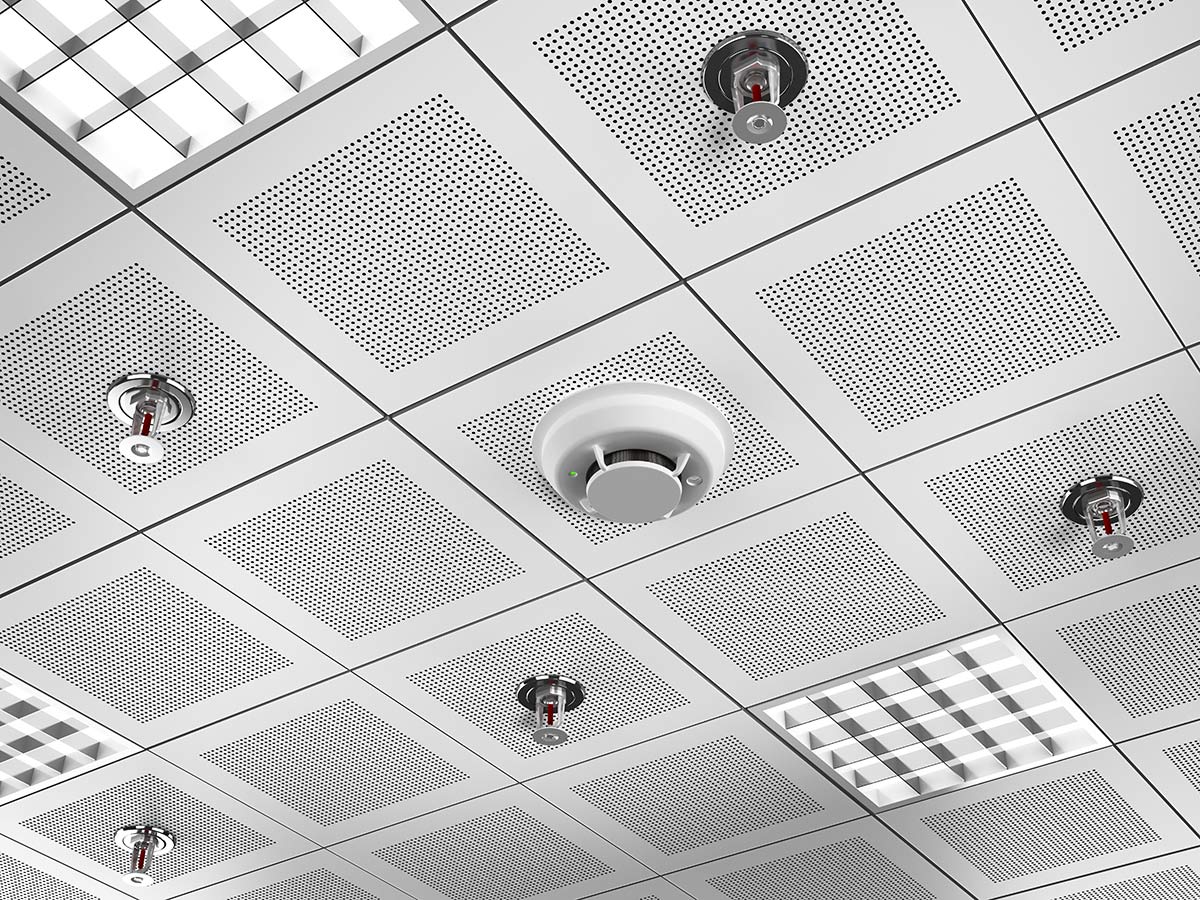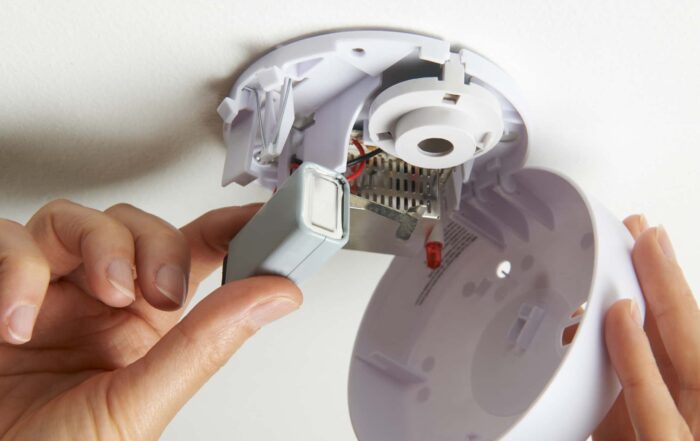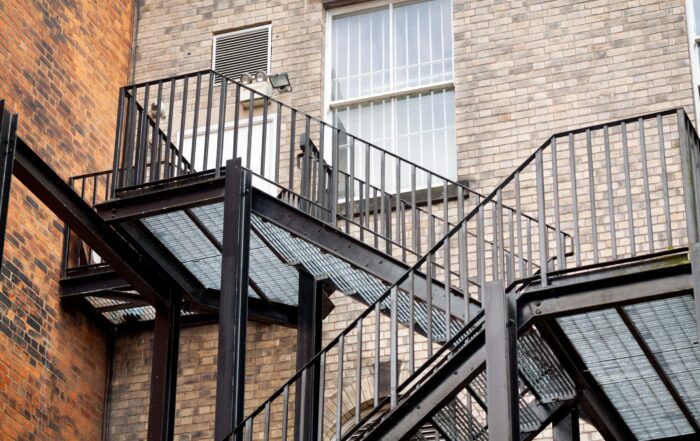How Do Smoke & Fire Alarms Work?
In 2020/21, Fire and Rescue Services attended 151,086 incidents involving fire (Home Office). Installing effective smoke and fire alarm systems provides crucial escape time by alerting the authorities faster. For peace of mind, you want to know that your alarm systems are there to spot even the earliest stages of fire. For years, the technology in smoke and fire alarms has been developing, meaning that there are a variety of different options on the market. But how does each type work? And which one is right for your premises?
Sovereign Fire & Security have been installing and maintaining highly effective fire, life safety, and security systems since the 90s. In that time, we’ve gained a reputation for innovative safety and security projects that exceed client expectations every time. From hospitals to high-rises, educational buildings to offices, we help people across the UK live without worry.
In this article, we explain how the different types of smoke and fire alarms work, helping you make the best choice for your organisation.
Related: How to Create an Effective Security Strategy for Your Organisation
Types of Smoke & Fire Detectors and Alarms
Photoelectric or Optical
This is another common type of smoke detector. It works by sending LED pulses of light into a sensor chamber every 10 seconds. In the event of a fire, smoke particles entering the chamber will scatter the infrared light onto a photodiode light receptor which it normally would miss. This sends a signal through an integrated circuit, causing the alarm to sound.
This type of alarm is best at detecting smouldering fires, and works particularly well near bedrooms, landings, and hallways, and even near kitchens as they don’t tend to produce false alarms due to cooking. They don’t work as well in dusty environments though.
Heat Alarms
Instead of reacting to smoke, a heat detector triggers an alarm when a room reaches a certain temperature. This makes them better for rooms that have a tendency to become smoky and steamy like kitchens, bathrooms, workshops, and factories. It’s best to use them in combination with other types of detection though, as they will not detect smoke, gas, or flames, and therefore may not provide the same amount of crucial escape time to occupants. They will only go off when the fire is established enough to significantly raise the temperature of the room.
Multi-Detectors
Multi-detectors are able to detect different products of combustion, such as heat, smoke and carbon monoxide. They feature a range of device sensors with a unique combination of sensing elements to provide quick and intelligent fire decisions.
The combined sensing of carbon monoxide with dual angle optical scatter and heat enables a higher level of false alarm immunity in the presence of steam, whilst still maintaining the integrity of detecting fire. The sensor can be programmed for different times of the day if needed and its flexibility means it can be set to suit the particular requirements of specific site applications.
Video Smoke Detection
Video smoke detectors work especially well in large open spaces as they offer a wider coverage than other types of detectors. Most video smoke alarms use visual-spectrum imagery to detect the presence of smoke. They can do this because of some software incorporated into the camera or on a centrally connected computer. This software analyses each frame of video multiple times a second, using an algorithm that has been trained to identity groups of pixels that behave like smoke or fire. The algorithm is trained on flaming fires and smoky, smouldering ones, meaning they understand a variety of different pixel patterns.
Aspirating Smoke Detection System (ASDs)
Aspirating systems are typically much quicker at identifying fires than their equivalents, able to detect smoke before it is visible to the naked eye. They contain a central detection unit which sucks air through a network of pipes. The air in the pipes is then tested using a laser, working in a similar way to a photoelectric detector. If the light scatters it means there are smoke particles present, which triggers the alarm.
Learn more: What is an Aspirating Smoke Detection System?
Addressable vs. Conventional Fire Alarm Systems
So, we’ve gone through the main types of detectors on the market, but how do they combine into a fire alarm system? The two main systems for commercial buildings are addressable and conventional, both of which we are proud to offer at Sovereign.
The main difference is how the detectors communicate with the fire alarm panel. Addressable systems are more intelligent and can provide the control panel with more detailed information because there is one wire connecting all the devices and each device has its own unique address. By contrast, in a conventional system each detector is wired separately to the panel and there will be multiple devices covering one zone. So, essentially, an alarm will point to a zone, rather than a device, meaning it is more difficult to work out exactly where the incident has occurred.
Depending on your premises, level of risk, and budget, one of these systems is likely to be more suitable than the other. If you need more advice on which to choose, we’re here to help.
Our Fire and Life Safety Systems >
Total Fire Safety with Sovereign Fire & Security
Whatever kind of building you’re responsible for, installing a fire and smoke alarm system that you can rely on is key. With Sovereign at your side, you can rest easy knowing that our solution is tailored to your premises and primed to detect even the earliest stages of fire. When it comes to keeping your site and employees safe, dependable detection makes all the difference. So, don’t wait until tomorrow, let’s sort out your fire safety today.
Contact us for more information on any of our services.
Read next: Fire and Security Maintenance Plan
Read next: A Beginner’s Guide to Life Safety Systems
Recent Articles
Innovations and Regulations for Smoke Detection and Fire Alarms
Making sure your fire safety systems are up to standards saves lives, protects your building, and ensures you’re compliant with government regulations. However, with so many types of alarm systems [...]
Fire and Security – The Complete Guide to Fire Escape Regulations in the UK
Fire risks are real, with 622,173 incidents attended by Fire and Rescue Services in England for the year ending March 2023. Many things can keep you safe from fires. But [...]
Fire Safety for Mixed-Use Buildings
Ensuring you have up to date fire safety systems for your mixed-use building isn’t just a good way to keep your residents and structure safe and secure – it is a legal requirement. [...]




